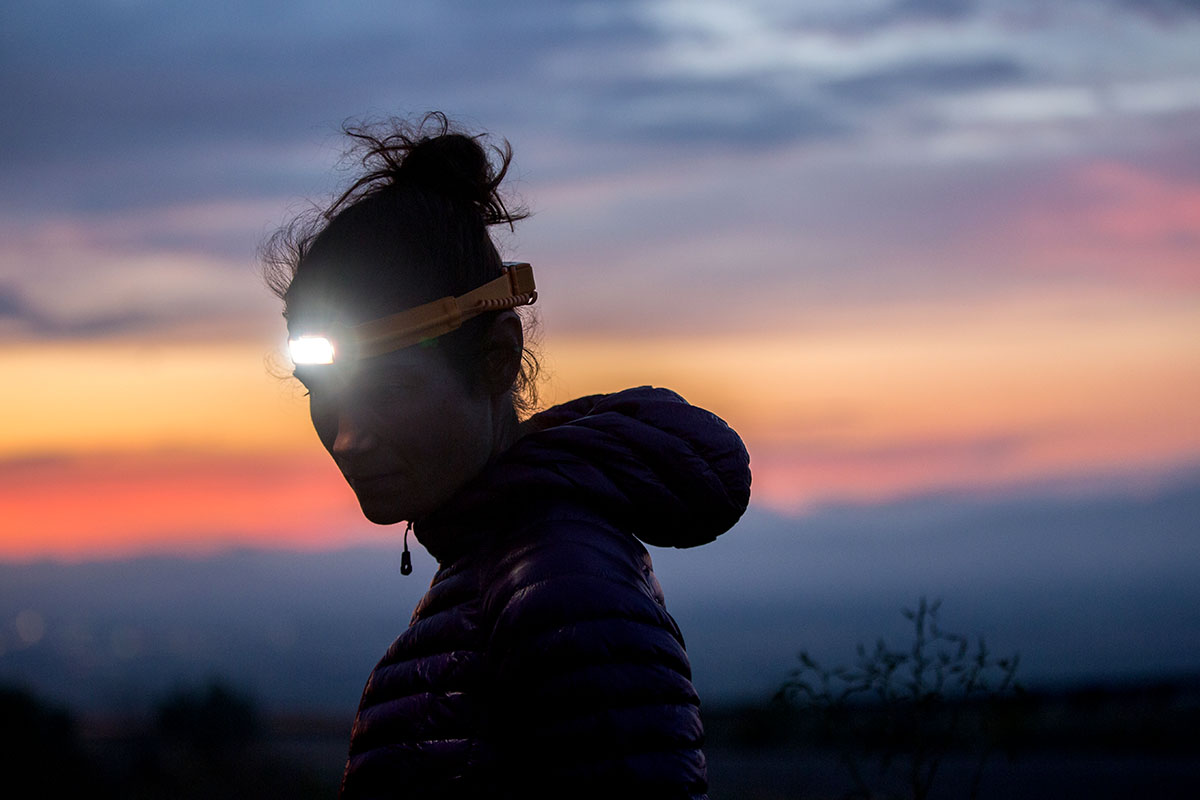
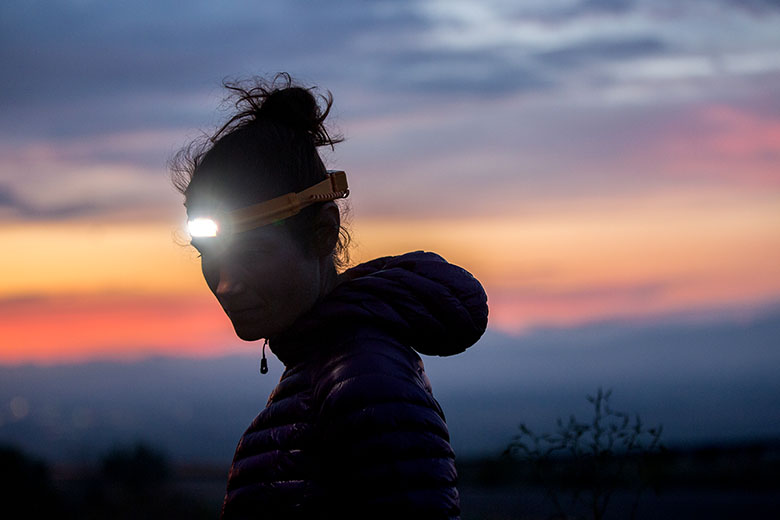
What’s the first rule of any outdoor adventure? You guessed it: always pack a headlamp. As your only true defense against the dark, headlamps are an essential piece of gear for everyone from hikers and trail runners to climbers and bikers. But not all headlamps are created equal, and there are a few factors to consider before buying. Below we break down everything you need to know, including best uses, lumens, batteries, LED types, water resistance, and more. And for a look at our top picks, see our article on the best headlamps.
The selection of modern headlamps is vast, and it can be difficult to know which model is best for you. The first way to whittle down your priorities is by considering how you will use your headlamp. Below we cover many popular outdoor activities, including daily use, camping and hiking, running, biking, and more. 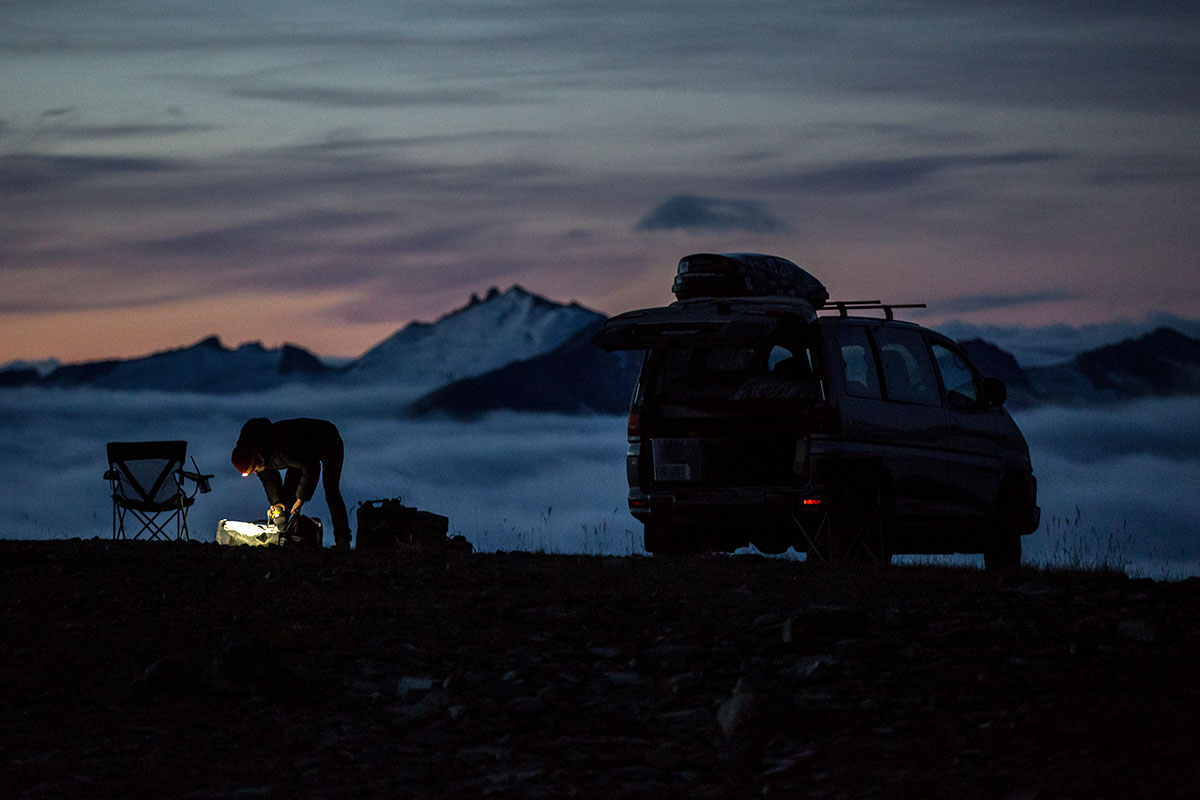
Headlamps aren't just useful for venturing into the wilderness—they can be great for nighttime dog walks, finding the leak under the kitchen sink, checking under the hood of your car, or any other number of everyday activities. Because you likely won’t need top-of-the-line brightness, battery life, or waterproofing for daily use, we recommend saving your money and opting for a fairly simple model. The Black Diamond Spotlite 160 is a nice option, with a max light output of 160 lumens, red light mode, and option for AAA, lithium, or rechargeable batteries—all for just $27.
If you’ve ever tried to follow a trail or set up a tent in the dark, you know it’s neither fun nor easy. Therefore, it goes without saying that if you’re headed into the woods overnight, you’re going to need a headlamp. For most nighttime camp tasks and hiking, a headlamp with 50-200 lumens should get the job done. Of course, if you’re hiking in complete darkness and need to navigate, more brightness could come in handy to see farther ahead. Some will appreciate the option of a flood light for wide-angle coverage around camp, and a red light setting will allow you to read a book without blinding your tentmate. The Black Diamond Spot 325 ($40) is an excellent option for most hiking and camping purposes, with the options of a long-range dual LED, softer proximity LED, or red LED, along with top-of-the-line IPX8 waterproofing. 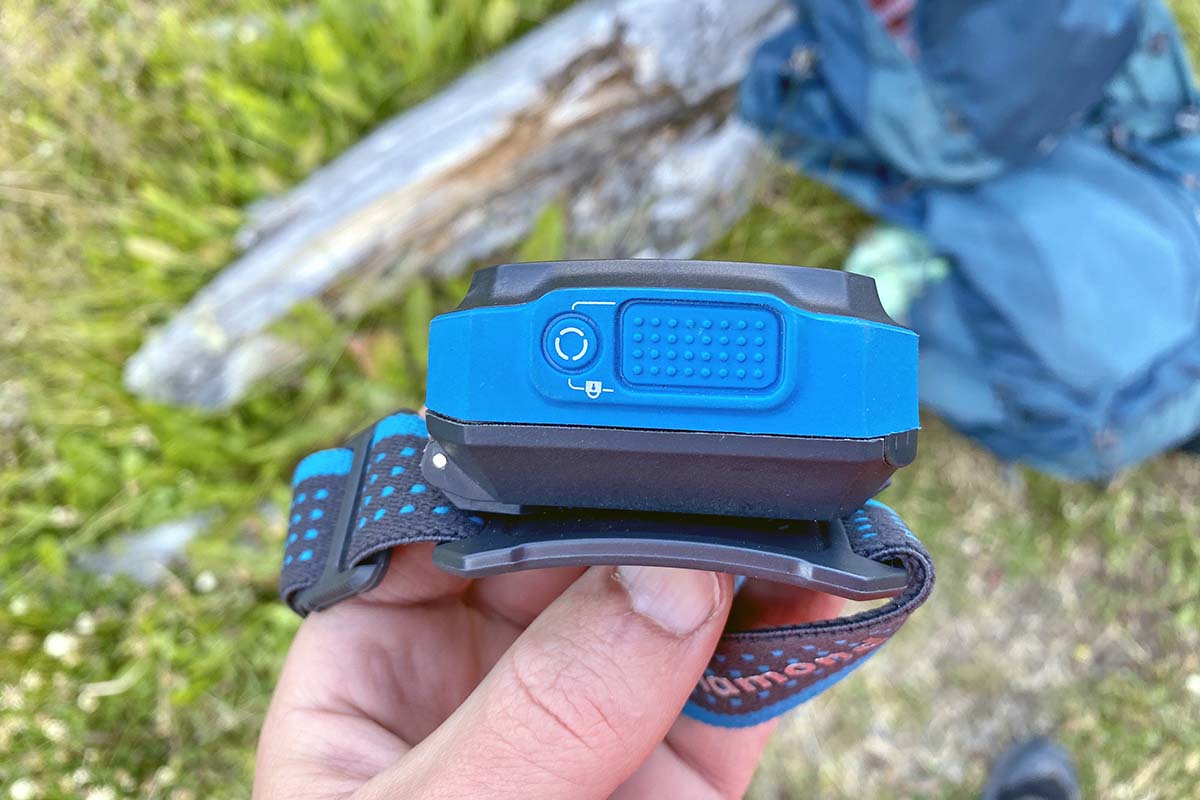
For climbers embarking on long routes, a headlamp is an essential piece of equipment. After all, you simply never know what the day will bring. The best headlamps for climbing have relatively high lumens and both spot beam and flood light settings for illuminating the rock in front of you and the route ahead (we explain these settings in more detail in "LED Types" below). Climbers out for a number of days will also want to consider battery life and bring along extra AAA batteries or a USB battery charger. The Petzl Actik Core ($70) is great model for climbers, with a flood beam, varying levels of brightness (up to 450 lumens), and the choice of using AAA batteries or Petzl’s USB-rechargeable Core battery. Climbers might also consider Petzl’s reactive lighting, which automatically adjusts brightness based on your needs (helpful when you don’t have a free hand to adjust the headlamp). However, this technology comes at a cost—the Swift RL is a whopping $120.
It’s also worth considering whether or not your climbing helmet is headlamp-compatible, indicated by clips along the brim for the headlamp strap to slide into. If your helmet lacks these clips, your headlamp should be worn underneath, in which case a rear battery pack would not fit. Some climbers also like to have a headlamp with a two-strap system—one wrapping around the circumference of your head and the other running over the top—for a more secure fit.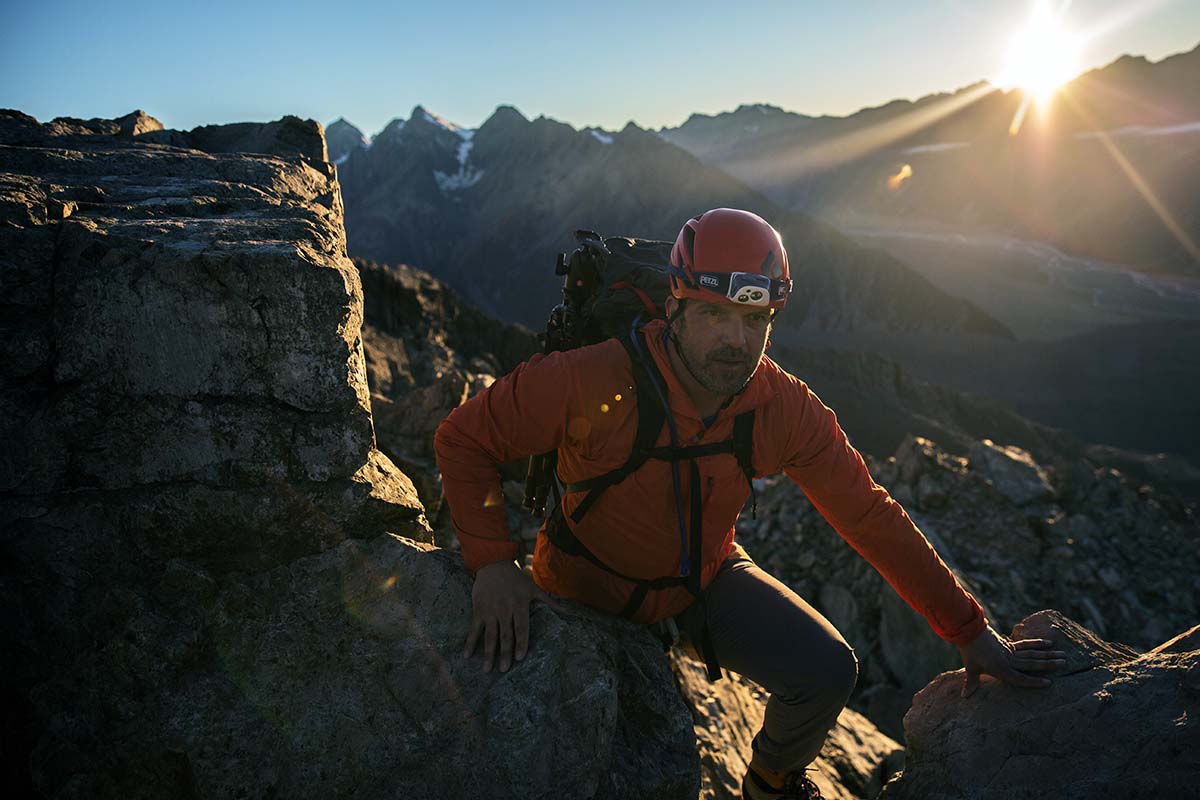
Mountain biking in the dark can be a fun way to rally friends for a fun evening or after-work ride in the darker months, but night rides will only be fun (and safe) with the right headlamp. Look for a model with a high number of lumens and impressive max beam distance. The Fenix HL60R is a great pick for mountain bikers, with a high setting of 400, a beam distance of 116 meters, and a max lumen burst setting of 950. It also comes with a two-strap system for extra security (as we mentioned above, it’s a good idea to check that your biking helmet is headlamp-compatible).
Many runners actually prefer running at night—it’s a great time to squeeze in a workout, there are fewer people on the trail, and it feels just a little more adventurous. Runners will want to look for a lightweight headlamp with an excellent short distance beam for illuminating rocks and roots, curbs and breaks in the pavement, or any other potential obstacles. Most importantly, they’ll want a lightweight headlamp that fits well and doesn’t bounce with their stride. For this reason, we love the BioLite 200, which weighs a feathery 1.75 ounces, features a slim light that integrates directly into the strap, and puts out 200 lumens. Another option is the 275-lumen Black Diamond Sprinter 275—designed specifically for running—which has a two strap-system for a secure fit, rear battery pack for even weight distribution, and a red light on the back for safety while road running.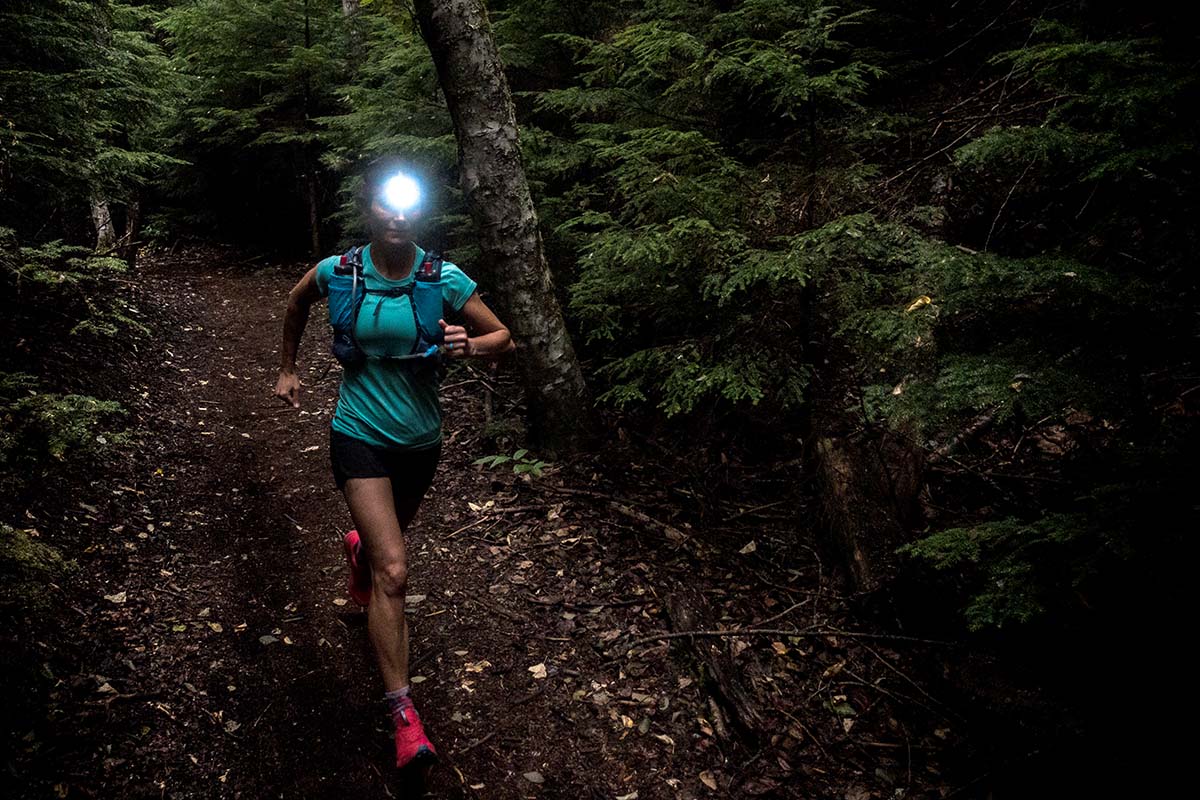
A lumen is a unit of measurement that represents the amount of visible light generated by a given light source. Put simply, the more lumens, the brighter the light will be. However, lumens are not always a perfect representation of the brightness of a headlamp—you also have to take into account beam type, beam distance, brand, and other factors—but it’s a good place to start when comparing various models.
In our headlamp round-up, the Petzl e+LITE has the lowest max setting of 50 lumens. On the other end of the spectrum, the Fenix HL60R has a max setting of a whopping 950 lumens. The majority of mid- to high-level headlamps will hover in the 200-350 range, which is completely sufficient for most uses. However, it's important to keep in mind that while headlamps are advertised by their max lumens, you’ll generally want to use lower brightness settings to conserve battery life. The aforementioned HL60R will only run for 48 minutes on its 950-lumen setting but lasts 10 hours when used at 150 lumens.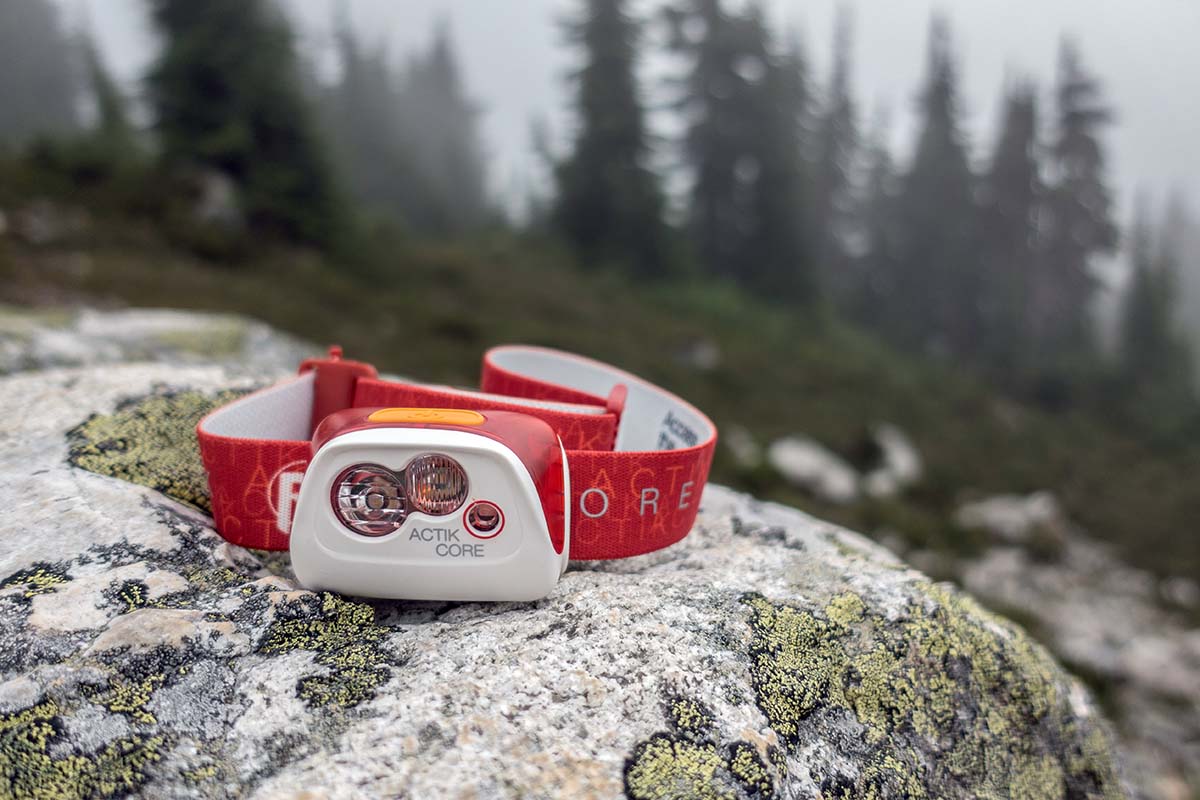
Headlamp weight varies from ultralight models like the 0.92-ounce Petzl e+LITE to the burly 10.6-ounce Black Diamond Icon 700. As a general rule of thumb, a heavier headlamp will be brighter and have a longer battery life—the Icon puts out 700 lumens and has a max battery life of 190 hours, whereas the e+LITE has 50 lumens and a max battery life of 12 hours. Additionally, lighter headlamps are often made of thinner plastic, whereas heavier models are constructed with aluminum or thick plastic for added durability. Most outdoor enthusiasts will want a headlamp that falls somewhere between these two extremes, like the 3-ounce Black Diamond Spot, which puts out 325 lumens with a max burn time of 200 hours. If you don’t need the added performance or crazy-light weight, these middle-of-the-road designs are comfortable, provide a good balance of brightness and battery life, and are still small enough to fit into a corner of your pack. In our opinion, the lightest of the light should be reserved for emergency use only.
On a related note, the weight distribution of a headlamp is also important to consider. As the weight of a headlamp increases, many manufacturers put battery packs on the rear of the strap for better balancing. If a heavier model has a battery pack on the front, it could get jostled around and become annoying during constant movement (like running). However, keep in mind that if you plan to wear your headlamp under a helmet, a rear battery pack could get in the way.
Most LED headlamps run on AAA batteries, like the Petzl Tikkina or the Coast FL85. The batteries are generally housed in the front with the main body of the light, but some are situated at the rear. Headlamps with rear battery packs will usually have a two-strap system (one over the top of the head) for added security and stability. The advantage to using AAA batteries in your headlamp is that you can easily pack extra if you anticipate being away from a power source for a long period of time. The downside is that replacing AAAs leads to waste (always make sure to safely dispose of used batteries), and purchasing batteries can get expensive over time.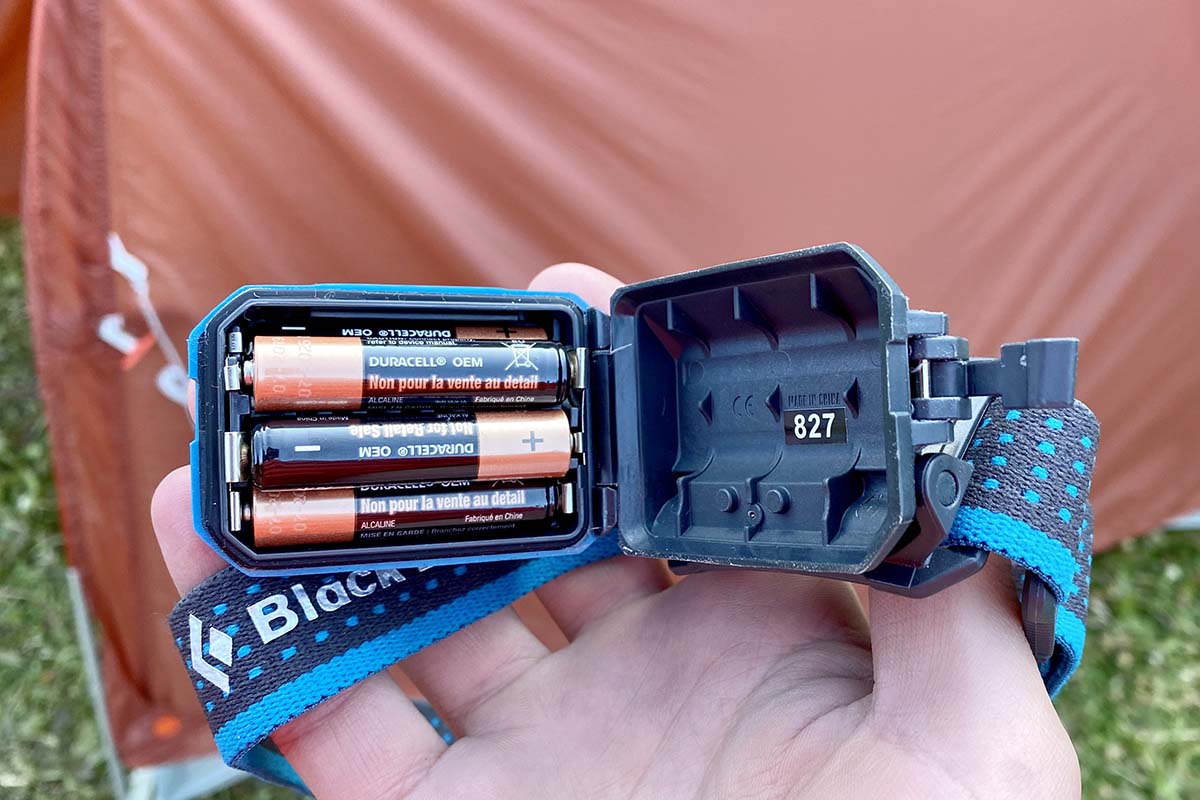
More and more, we see headlamps with built-in rechargeable battery packs, such as the BioLite 330 and Black Diamond Sprinter. These batteries are charged via micro USB and can be recharged in the backcountry by solar panel or a portable power bank like the Goal Zero Flip 24. The upside of a rechargeable battery is clear: there's a big reduction in unnecessary waste, which also saves you money over time. However, if your headlamp runs out of battery with no way to recharge, you’re out of luck (for this reason, we love the hybrid options described below). But all things considered, while you do pay more for a headlamp with a rechargeable battery, the long-term savings of not having to buy AAAs makes these models our preferred choice in most cases.
Petzl led the way in headlamp battery innovation with their hybrid CORE technology, which allows the user to choose between a USB-rechargeable battery pack or AAA batteries (as seen in their Actik CORE, among others). Black Diamond has subsequently caught on with their ReVolt 350. Hybrid batteries like the CORE are ideal for extended backcountry use, when you want the convenience of a rechargeable battery but can’t risk your battery running out in the field. The only real downside to hybrid batteries is cost—the Actik CORE will set you back $70, while the standard Actik (which runs on AAA batteries) is cheaper at $50. Whether or not it's worth the added investment is up to you.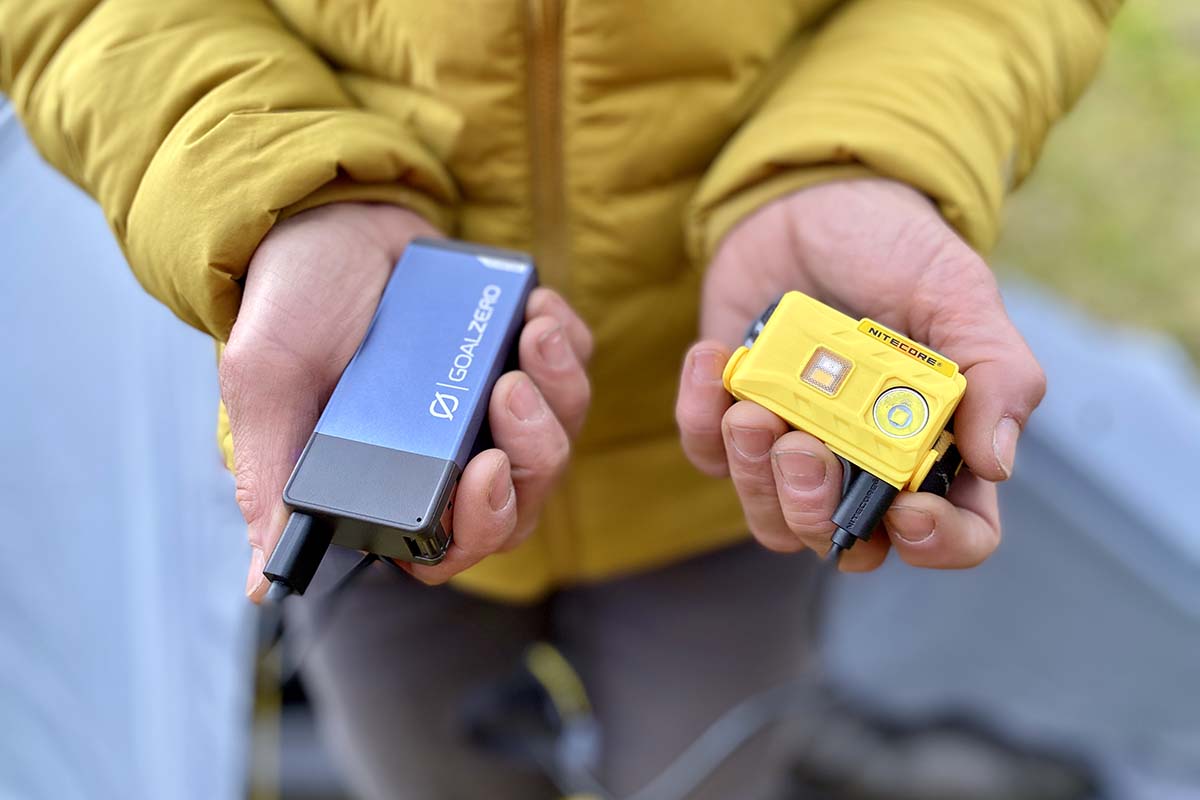
The battery life spec provided by manufacturers can be a helpful indicator of how long your headlamp might last, but it’s not foolproof. Various factors, including brightness, strobe use, and temperature, will have an impact on your battery life. Further, it’s important to consider that some headlamps (known as regulated designs) are designed to put out near-constant brightness right up until they die, whereas the majority will lag in brightness as battery life dwindles. Manufacturers are getting better at reporting these specs by providing charts that list runtime by lumen level or listing the maximum beam distance throughout the lifespan of the battery. But in general, you’ll want to dig a bit more into the details to know exactly what to expect from each model.
To maximize battery life, only use as much light as you need. This means you’ll want to be well-versed in adjusting the brightness of your headlamp, which can take some getting used to. For organizing inside your tent, the lowest setting will likely be enough, but if you hear wildlife walking around camp, by all means, crank your headlamp up to the highest setting to see what’s out there. You’ll also want to make sure that your headlamp is locked when it's stored away in your pack or for the night. Finally, keeping your headlamp warm in cold temperatures can go a long way for maximizing battery life (more on this in “Cold-Weather Performance” below).
Most headlamps have a range of lighting modes for different applications. The default is most often spot mode, which is a long-distance beam of light. The spot setting is helpful for tasks like illuminating a trail, scanning the woods for wildlife, and route-finding while climbing or mountain biking. However, for uses like getting set up at camp, the wider flood setting will be much more useful, as it's meant to maximize the view of what’s right in front of you. A number of headlamps will also offer a strobe option for emergency circumstances, which repeatedly flashes bright and noticeable light without draining the battery. We like the Coast HL7 for its variety of settings, including a focusing ring for easy beam adjustment from flood to spot. Most other models have fixed settings that can be switched between with the push of a button.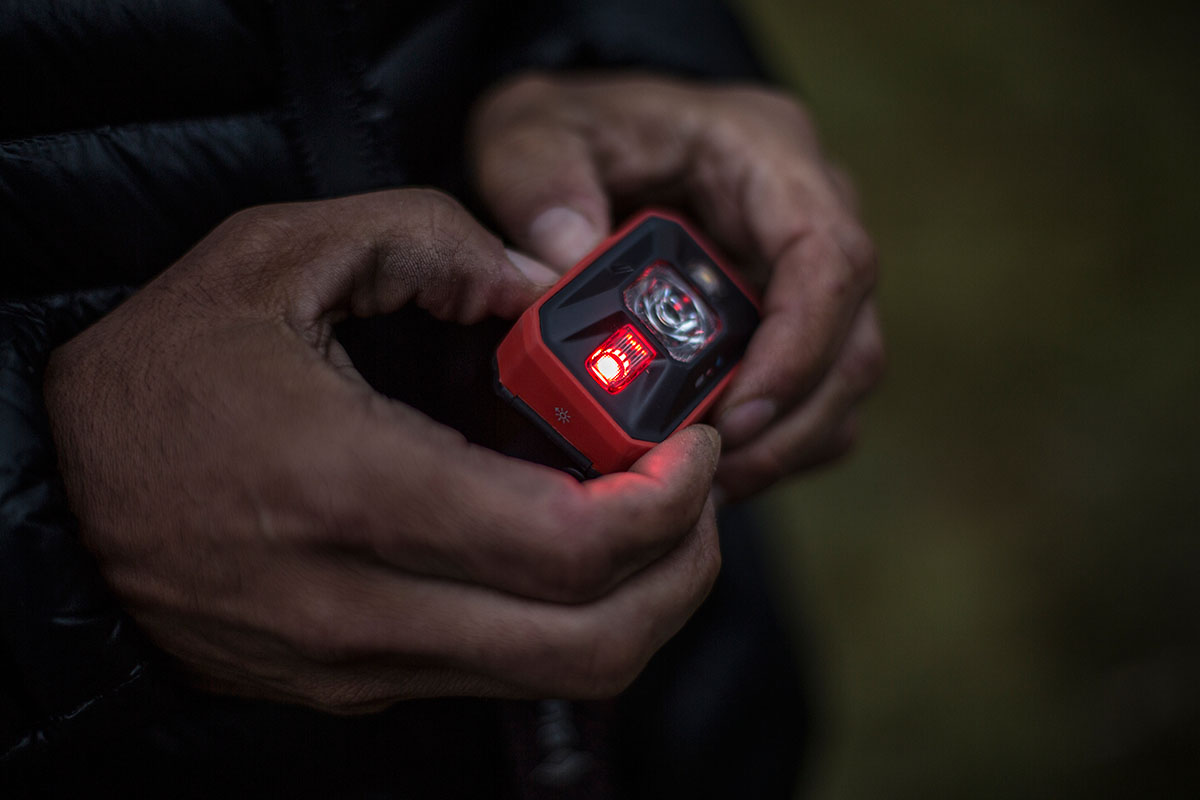
Most mid- to high-end headlamps will also have color settings. The most common color is red, but some also have blue and green lights. Colored light isn’t as intense on the eyes as white light and doesn’t make your pupils readjust, so the colored settings are a great option for hanging out at camp without blinding your friends, reading in the tent, or going to the bathroom in the middle of the night. Another plus is that colored light does not attract bugs the same way that white light does. Those with specific night needs will find that blue and green LEDs have their place too. Hunters, for example, use blue for tracking as it allows them to differentiate between green foliage and the red blood of the animal.
For more serious use when your headlamp will be exposed to the elements—rain, snow, dirt, sand—you’ll want to consider the weather resistance of your headlamp. The effectiveness of a headlamp’s seal is measured by the IP rating: IPX0 offers very little protection, while IPX8 means that the headlamp should be able to operate even after being submerged in water for 30 minutes. The Black Diamond Spot 325, for example, has a rating of IPX8, while most headlamps hover around IPX4, meaning they can generally handle a downpour but not submersion. A higher level of protection can be a nice assurance that you won’t destroy your headlamp if you drop it in a lake, but in reality won’t be necessary for most uses or outings.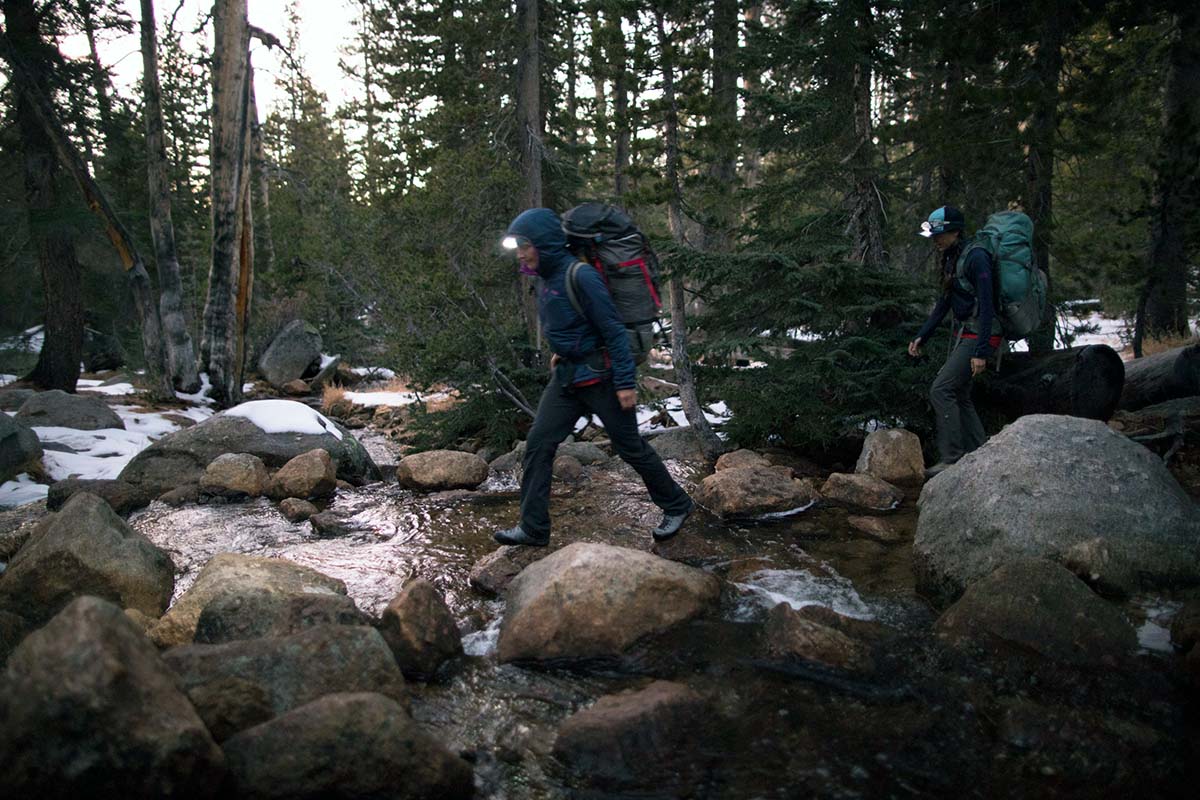
It’s no secret that cold weather drains the battery in your electronics, although some battery types perform better than others when the mercury drops. For example, lithium or rechargeable NiMH batteries are much better able to withstand cold temperatures than traditional alkaline batteries. Another way to prolong your battery life in the cold is by storing your headlamp somewhere warm during the day, like in a coat pocket or swaddled in clothing in your pack (it’s also a good idea to tuck it in with you in your sleeping bag at night). In the most extreme conditions, it can be a good idea to have a model with a remote battery pack (like the Princeton Tec Apex Extreme) so you can keep the battery warm in your jacket while you use your headlamp.
Headlamp straps come in a variety of shapes and sizes, and you’ll want to make sure that you select a model that best suits your needs. The traditional design is single elastic nylon strap that wraps around the circumference of your head. Some single straps, like that on the BioLite 330, offer a standard flush fit, while others, like the Petzl Swift RL, split in the rear for added stability. Another design you'll come across is the two-strap model, which includes an additional strap that runs lengthwise from front to back over the top of your head. Two-strap systems are commonly found with rear battery packs and are useful for more intense activities like spelunking or night biking. Finally, some minimalist headlamps, like the Petzl Bindi, use two pieces of thin elastic cord to shave weight and bulk. In general, we only recommend this style for emergency use, as it's the least comfortable of the designs mentioned.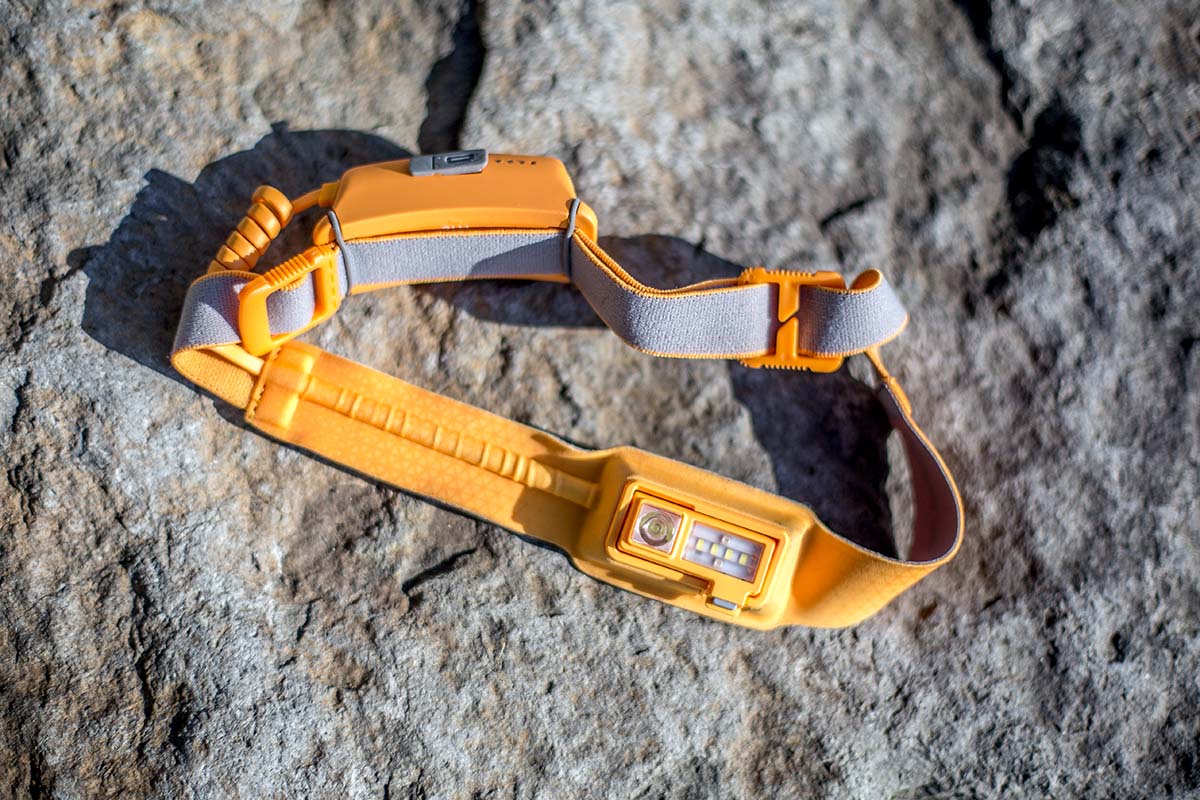
There’s no shortage of headlamps on the market, and new models are emerging each year with improvements in technology. Once you’ve honed in on the features you need, it's time for the fun part: selecting your headlamp. To help, we’ve compiled our top picks for this year in our article on the best headlamps, and below are some of our favorites broken down into key categories:
Best Overall Headlamp: Black Diamond Spot 325
Best Rechargeable Headlamp: Petzl Actik Core
Best Budget Headlamp: Petzl Tikkina
Best Ultralight Headlamp: Nitecore NU25
Best Headlamp for Running: Black Diamond Sprinter 275
See Our List of Best Headlamps